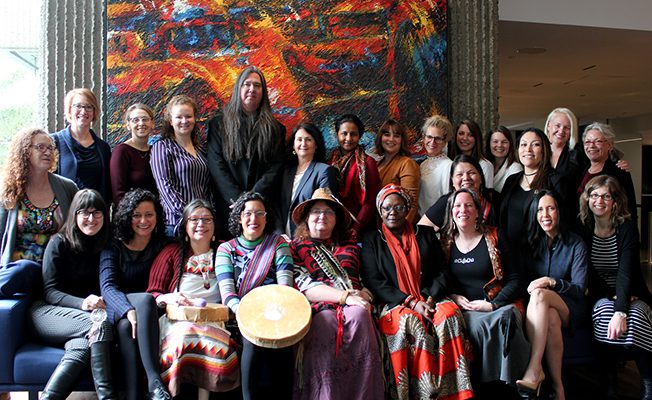Did you know that worldwide, women represent over 50% of people living with HIV? However, many HIV-specific services are not designed or delivered with women in mind.
The inequities and unmet health care needs faced by women living with HIV are key reasons behind why CTN 262: the Canadian HIV Women’s Sexual & Reproductive Health Cohort Study (CHIWOS) was initiated. It is the largest community-based cohort study of women living with HIV (including cis and trans women, and Two Spirit and non-binary people) in Canada. The study set out to answer vital questions. How do women view their care? What are their needs? What are their priorities?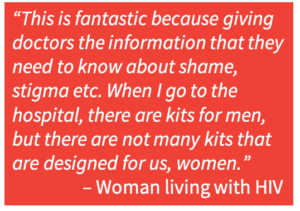
Through answering these questions, the CHIWOS team were able to develop two toolkits to bring holistic care to women living with HIV, both launching July 8, 2020.
We spoke to CHIWOS Principal Investigator Dr. Mona Loutfy and Research Coordinator Mina Kazemi to find out more.
What inequities do women face?
Women living with HIV experience a lot of issues related to intersectional stigma and discriminations, such as sexism, transphobia, and racism. Inequities can also be seen in the way HIV care is provided.
“Care is very much institutionalized,” explains Dr. Loutfy. “For example, patients have to attend their appointments at a precise time; if they don’t, they’re not seen. This process may not be compatible with their lives or feel culturally safe.” Women have competing priorities and roles that can make it challenging to attend short, time-constrained appointments. Furthermore, in order to access the care and medications they need, many women, regardless of their level of education, have to forgo employment and be on disability benefits, or live in poverty.
It is important to remember that women living with the virus don’t just need to seek care for HIV. They may also need access to sexual or reproductive care, mental health care, or peer support. Mina explains, “We are seeing evidence that women’s health care isn’t optimized. Many women have health care needs that are unmet, such as Pap testing, pregnancy planning, and contraceptive discussions.”
Dr. Loutfy continues, “Many HIV services and resources in Canada have been driven by gay men as was needed at the beginning of the epidemic; so a lot of community-based organizations aren’t designed to support women and this is a very important gap.”
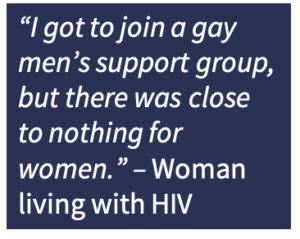 CHIWOS research also found evidence emphasizing that women’s experiences of violence need to be taken into consideration in order to provide the right care. “Women in CHIWOS have experienced high levels of violence – 13 times higher than women in the general population,” explains Mina. “When it comes to women’s sexuality, their social environments – the stigma, the violence, the poverty – all impact their sexual lives. Our model of care was developed to address women’s unique needs and priorities.”
CHIWOS research also found evidence emphasizing that women’s experiences of violence need to be taken into consideration in order to provide the right care. “Women in CHIWOS have experienced high levels of violence – 13 times higher than women in the general population,” explains Mina. “When it comes to women’s sexuality, their social environments – the stigma, the violence, the poverty – all impact their sexual lives. Our model of care was developed to address women’s unique needs and priorities.”
How can CHIWOS help?
To mark the 10th anniversary of CHIWOS, the team compiled all the quantitative papers that they have published so far. Each of these 59 papers points to the experiences and unmet needs of women living with HIV, leading to the development of the all-encompassing Women-Centred HIV Care (WCHC) model.
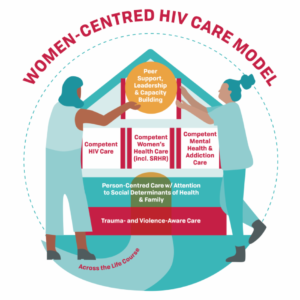
*Intersecting oppressions refers to disadvantages experienced by an individual based on the design of social and institutional systems that exclude certain individuals based on their multiple and overlapping social identities including gender, race, ethnicity, class, sexuality, and HIV status. These identities are also shaped by history including colonization and slavery, and impact many aspects of one’s life, including health status and wellbeing.
“From this model of care, we developed two toolkits,” says Dr. Loutfy. “One is for health care providers – clinicians, nurses, pharmacists, social workers, community-based organization workers, and more – and details how they can provide women-centred HIV care. The other is for the women themselves, and promotes self-management and health self-advocacy supporting them to access the health care that they want and need, and links them to additional resources that could help throughout life.”
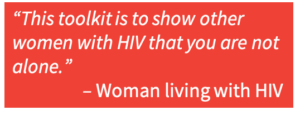 The whole process was performed using a community collaborative approach. CHIWOS worked with a national working group consisting of clinicians, researchers, community-based organization staff, and women living with HIV. They then proceeded to engage with the Centre for Effective Practice (CEP) in Toronto, who are experts in toolkit development.
The whole process was performed using a community collaborative approach. CHIWOS worked with a national working group consisting of clinicians, researchers, community-based organization staff, and women living with HIV. They then proceeded to engage with the Centre for Effective Practice (CEP) in Toronto, who are experts in toolkit development.
“CEP guided us through an 18-month process developing the toolkits, applying user-centered design methodology and integrated knowledge translation, following an evidence-based approach,” explains Mina. “We reviewed and appraised hundreds of guidelines and papers to extract recommendations, and went through many rounds of expert feedback, focus groups and independent user reviews. These toolkits are truly evidence-based.”
What could the toolkits achieve?
One of the major goals of the WCHC model and toolkits is to promote comprehensive care.
“We want to encourage trauma-aware, person-centred care that integrates HIV care, women’s health, and mental health, and links women to peer support,” says Dr. Loutfy. “We want to bring to clinicians’ attention that this is the care women not only want, but need.”
“We want women to know that they have rights, they have choices, and they are not alone,” says Mina. “These toolkits were made lovingly in partnership with women living with HIV and will support women to get the care they deserve.”
Each member of the CHIWOS team is an advocate for women’s health care. For every presentation and project, the team works closely with women living with HIV to ensure their voices are heard.
Ultimately, these toolkits will support clinicians and help women living with HIV make informed decisions that work for them.

Stay tuned
To support the launch of the two toolkits, the CHIWOS and WCHC teams are hosting two webinars for clinicians, community-based organization workers, and women living with HIV on September 24th and October 1st 2020.
More details to follow.
You can keep up to date by joining CHIWOS online:
www.chiwos.ca https://www.facebook.com/CHIWOS @CHIWOSresearch
